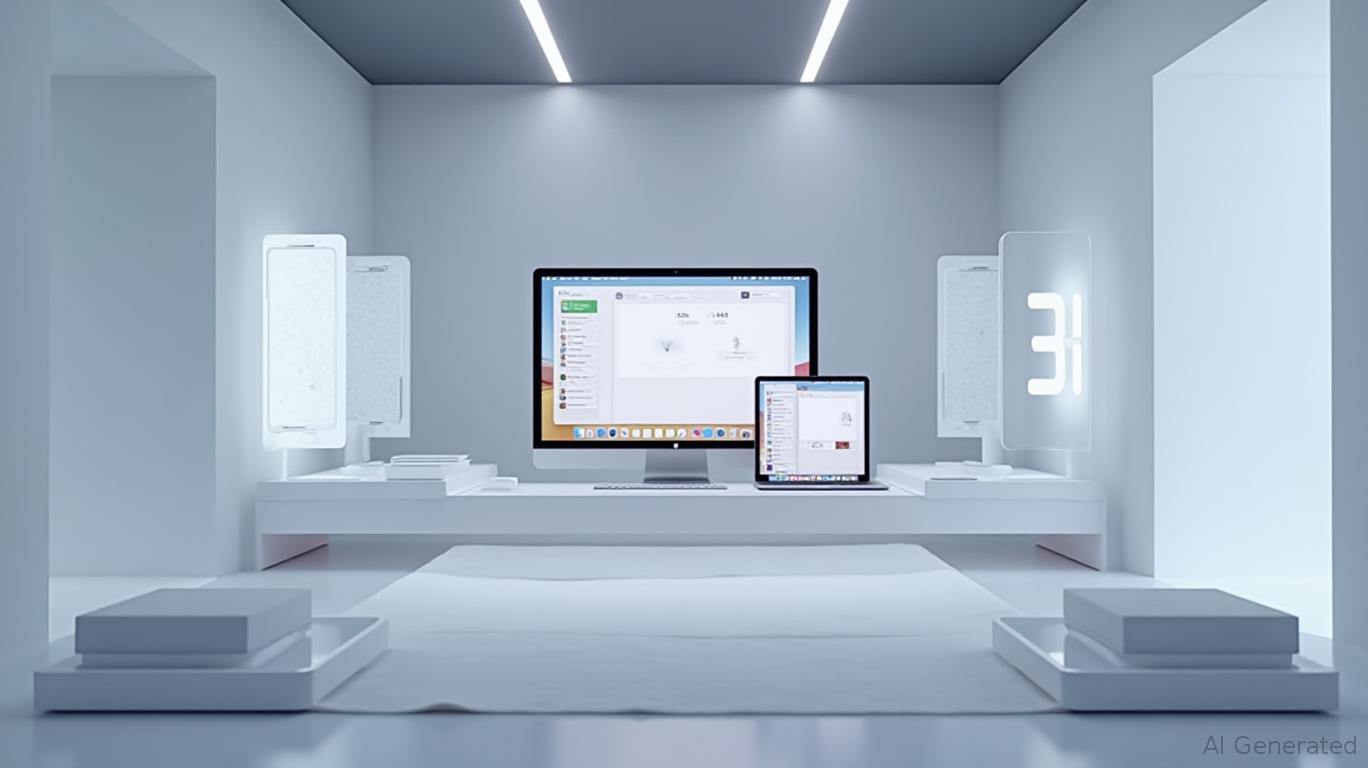Apple's WWDC 2025: A Catalyst for Revaluing Apple's Innovation Pipeline
Apple's annual Worldwide Developers Conference (WWDC) has long been a proving ground for the company's software prowess, but this year's event—held against the backdrop of slowing hardware sales—carries heightened stakes. The software updates unveiled at WWDC 2025, particularly the Solarium interface overhaul and deeper AI integration, signal a strategic pivot to reposition Apple's growth narrative beyond its hardware-centric past. This shift could redefine investor perceptions of Apple's ability to sustain profitability in an era where innovation is increasingly measured by software-driven experiences rather than physical devices.
The Solarium Overhaul: A Unified Ecosystem Play
At the core of WWDC 2025's announcements is the Solarium interface, a design language inspired by visionOS that unifies Apple's entire ecosystem. The “glassy” aesthetic—translucent menus, rounded icons, and cohesive cross-device visuals—aims to create a seamless user experience across iPhones, iPads, Macs, Watches, and TVs. This move is more than skin-deep: by standardizing interfaces,
reduces cognitive friction for users and developers alike, potentially accelerating adoption of its services and hardware.
The shift to year-based software naming (e.g., iOS 26 instead of iOS 19) further underscores Apple's focus on continuity. This change simplifies version tracking for users and developers, aligning software releases with the company's annual product cycles—a subtle yet meaningful step toward operational consistency.
AI Integration: Subtlety as Strategy
While Apple's approach to AI remains cautious compared to rivals, the Apple Intelligence updates embedded across its platforms are quietly transformative. Enhanced Siri capabilities, AI-powered notification summaries, and tools like the Preview App (a macOS-style PDF editor for iOS) reflect a focus on incremental utility over flashy features. For investors, this pragmatic strategy minimizes execution risks while addressing real-world pain points: smoother workflows, personalized experiences, and developer-friendly AI tools could boost engagement without alienating Apple's core user base.
The Games App, a preinstalled hub for curated games and Apple Arcade content, highlights another angle of this strategy. By centralizing gaming within its ecosystem, Apple reduces reliance on third-party app stores and opens new revenue streams through subscriptions—a critical move as hardware sales plateau.
Software as a Growth Lever: Data-Driven Insights
Apple's software updates are not just about aesthetics. They are designed to reinforce its services-centric flywheel: tighter ecosystem integration drives user retention, which in turn fuels services revenue (cloud storage, subscriptions, ads). Consider the watchOS 26 health features, such as blood pressure monitoring and AI-driven notification summaries. These could position the Apple Watch as a premium health device, extending its lifecycle and broadening its appeal beyond fitness enthusiasts.
Data Note: If historical trends hold, services revenue has grown at a ~12% CAGR since 2019, outpacing iPhone's ~5% growth. WWDC 2025's updates could accelerate this divergence.
Risks and Considerations
Hardware saturation remains a concern. While the Mac Pro refresh rumors and AirPod upgrades are promising, Apple's ability to monetize software innovations without commensurate hardware upgrades will be pivotal. Competitors like Samsung and Google are also doubling down on AI and AR/VR, creating a race to define the next-generation user experience.
Investors should also monitor adoption rates of Solarium and AI features. If users embrace the unified design and developers leverage Apple's tools effectively, the stock could see a revaluation. However, if these updates fail to ignite excitement, Apple may struggle to justify its premium valuation.
Investment Implications: A Buy on Valuation, a Hold on Execution
Apple's stock currently trades at ~28x forward P/E, a discount to its five-year average of ~32x. This suggests investors are pricing in hardware stagnation. WWDC 2025's software announcements, however, could narrow that gap if they demonstrate a path to sustained services growth and ecosystem stickiness.
Recommendation:
- Buy if Apple's software-driven engagement metrics (e.g., Services revenue, Watch adoption rates) outperform expectations in the next 6–12 months.
- Hold pending clearer signs of hardware resilience or software monetization breakthroughs.
Historically, a tactical approach around WWDC events has shown mixed but notable results. For instance, buying Apple 5 trading days before WWDC and holding for 30 days since 2020 delivered an average return of 55.56%, though with a maximum drawdown of -26.07% and a Sharpe ratio of 0.53. While this underperformed the benchmark's 108.26% return over the same period, it underscores the strategy's potential during catalyst-driven periods—provided investors account for its volatility.
Conclusion: The Ecosystem as the New Differentiator
WWDC 2025 marks a turning point for Apple. By prioritizing software cohesion and AI-driven utility, it aims to transform its ecosystem into a self-reinforcing engine of growth—one less reliant on hardware upgrades and more focused on deepening user relationships. For investors, this is a critical test: can Apple's incremental innovations reposition it as a leader in the post-hardware economy? The answer could determine whether its stock price, and its valuation narrative, are due for a long-overdue reset.

Comments
No comments yet